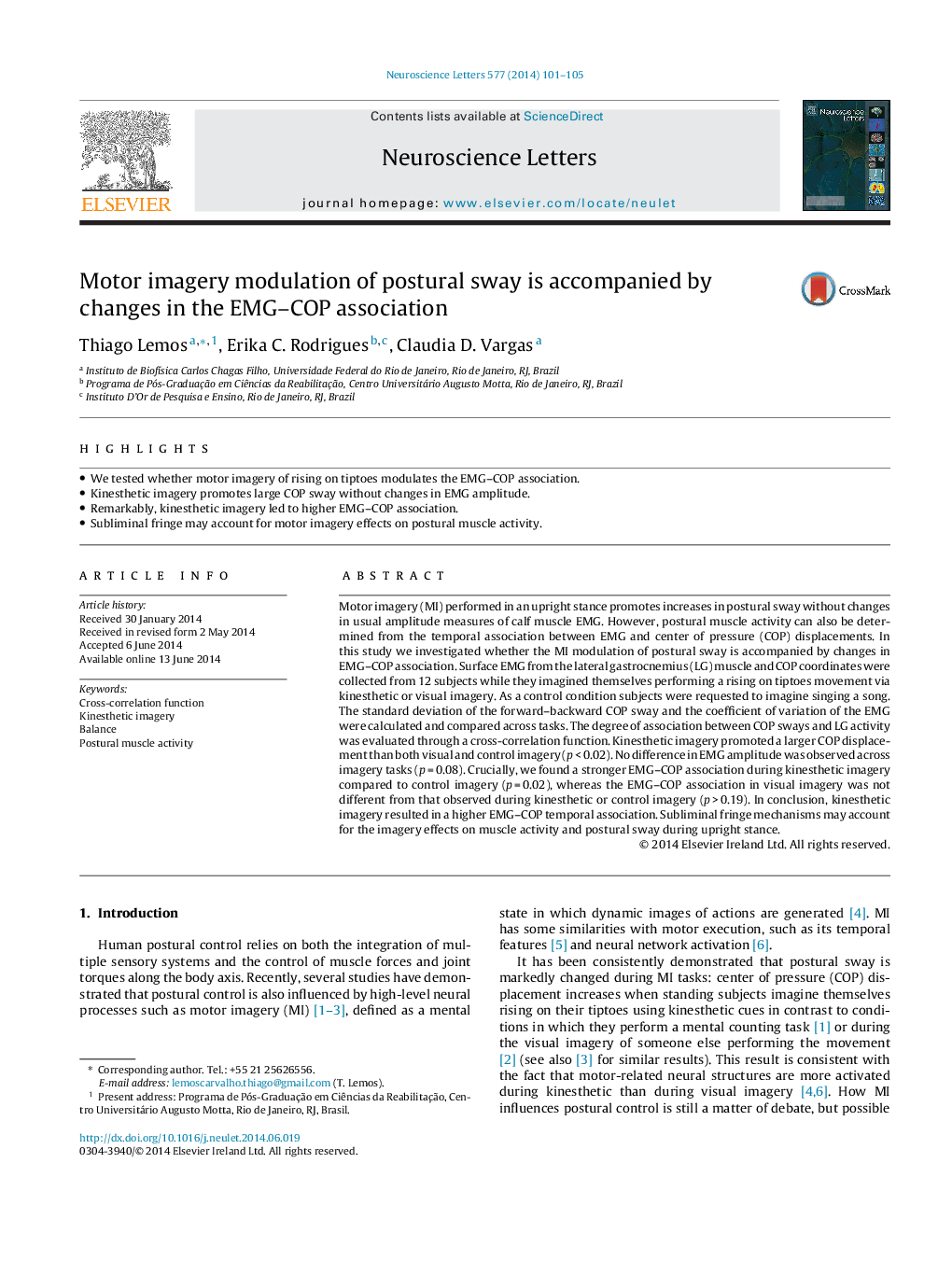| کد مقاله | کد نشریه | سال انتشار | مقاله انگلیسی | نسخه تمام متن |
|---|---|---|---|---|
| 4343707 | 1615122 | 2014 | 5 صفحه PDF | دانلود رایگان |

• We tested whether motor imagery of rising on tiptoes modulates the EMG–COP association.
• Kinesthetic imagery promotes large COP sway without changes in EMG amplitude.
• Remarkably, kinesthetic imagery led to higher EMG–COP association.
• Subliminal fringe may account for motor imagery effects on postural muscle activity.
Motor imagery (MI) performed in an upright stance promotes increases in postural sway without changes in usual amplitude measures of calf muscle EMG. However, postural muscle activity can also be determined from the temporal association between EMG and center of pressure (COP) displacements. In this study we investigated whether the MI modulation of postural sway is accompanied by changes in EMG–COP association. Surface EMG from the lateral gastrocnemius (LG) muscle and COP coordinates were collected from 12 subjects while they imagined themselves performing a rising on tiptoes movement via kinesthetic or visual imagery. As a control condition subjects were requested to imagine singing a song. The standard deviation of the forward–backward COP sway and the coefficient of variation of the EMG were calculated and compared across tasks. The degree of association between COP sways and LG activity was evaluated through a cross-correlation function. Kinesthetic imagery promoted a larger COP displacement than both visual and control imagery (p < 0.02). No difference in EMG amplitude was observed across imagery tasks (p = 0.08). Crucially, we found a stronger EMG–COP association during kinesthetic imagery compared to control imagery (p = 0.02), whereas the EMG–COP association in visual imagery was not different from that observed during kinesthetic or control imagery (p > 0.19). In conclusion, kinesthetic imagery resulted in a higher EMG–COP temporal association. Subliminal fringe mechanisms may account for the imagery effects on muscle activity and postural sway during upright stance.
Journal: Neuroscience Letters - Volume 577, 8 August 2014, Pages 101–105